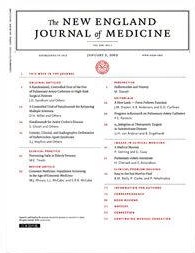
METABOLIC DISORDERS
Lower incidence of vertebral fracture with romosozumab vs placebo for osteoporosis
N Engl J Med. 2016 Oct 20;375(16):1532-15437180 postmenopausal women with osteoporosis were randomized to 12 months of treatment with either romosozumab or placebo, followed by a further 12 months of treatment with denosumab in both groups. The purpose of this study was to evaluate and compare vertebral fracture incidence, nonovertebral fracture incidence, and safety outcomes between groups after 6, 12, 18, and 24 months. Results after 12 months demonstrated a significantly lower vertebral fracture rate in the romosozumab group compared to the placebo group, though no significant difference in nonvertebral fracture rate was observed. Results after 24 months were consistent with those observed after 12 months. The incidence of adverse events leading to discontinuation was similar between groups.
Unlock the full ACE Report
You have access to {0} free articles per month.Click below to unlock and view this {1}
Unlock NowCritical appraisals of the latest, high-impact randomized controlled trials and systematic reviews in orthopaedics
Access to OrthoEvidence podcast content, including collaborations with the Journal of Bone and Joint Surgery, interviews with internationally recognized surgeons, and roundtable discussions on orthopaedic news and topics
Subscription to The Pulse, a twice-weekly evidence-based newsletter designed to help you make better clinical decisions
Exclusive access to original content articles, including in-house systematic reviews, and articles on health research methods and hot orthopaedic topics
Or upgrade today and gain access to all OrthoEvidence content for just $1.99 per week.
Already have an account? Log in


Subscribe to "The Pulse"
Evidence-Based Orthopaedics direct to your inbox.
{0} of {1} free articles
Become an OrthoEvidence Premium Member. Expand your perspective with high-quality evidence.
Upgrade Now












































































